

Review: Corsair DHX vs. Kingston HyperX
Last week, we received the first Corsair DHX DDR3 memory kit and this was the opportunity to compare them against Kingston.
We wanted to include OCZ too, but all the sudden the kit stopped liking our motherboard
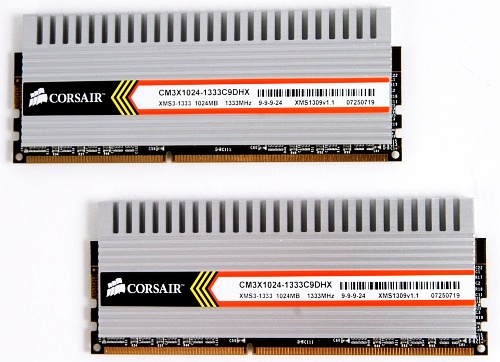
The Corsair DHX modules comes with the patented DHX heatspreader which should provide better cooling and thus avoid overheating. We can say that the modules were noticable cooler than Kingston's, but we needed to increase the voltage to a dangerously high setting.

Corsair does not follow the lower latency delusion and our test proves that low latency does not necessarily mean more bandwidth .
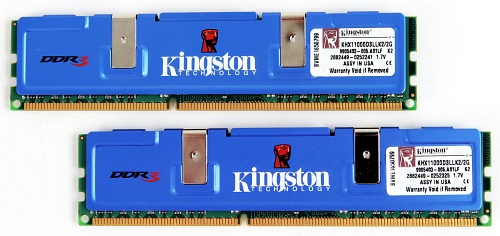
The Kingston kit is specified to work at 1375MHz and comes with the ordinary blue heatspreader. While Corsair states the modules can go up to 1500Mhz, Kingston didn't make such a claim. With some overvoltage and additional cooling Kingston can match Corsair.
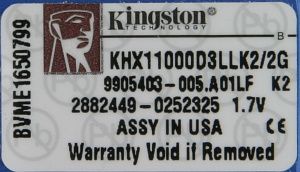
To overclock the kits properly we did some manual settings in the BIOS which is avoided during motherboard reviews.
If you want to buy such kits, make sure to set the following BIOS-setting on the P5K3 Deluxe/WIFI-AP:
DRAM Static Read Control: disabled
DRAM Dynamic Write Control: disabled
Transaction Booster: enabled
Boost: 1
CPU Spread Spectrum: disabled
PCIe Spread Spectrum: disabled
DRAM Voltage: 1333MHz/1500MHz, Corsair 1.50V/1.75V, Kingston 1.70V/1.90~1.95V
Testbed:
Motherboard:
ASUS P5K3 Deluxe/Wifi-AP (provided by Ditech)
Intel P35/iCH9R
CPU:
Intel Core 2 Duo E6700 (provided by Intel)
CPU-Cooler:
Scythe Andy Samurai Master (provided by Scythe-Europe)
Memory:
Corsair DHX 2GB Kit PC3-12000U TWIN3X2048-1333C9DHX/G (provided by Corsair)
CL7-7-7-20-CR2T at 1.50V
CL9-9-9-24-CR2T at 1.75V
Kingston 2GB kit PC3-11000U KHX11000D2K2/2G (provided by Kingston)
CL7-7-7-20-CR2T at 1.70V
CL9-9-9-24-CR2T at 1.95V
Graphics Card:
AMD ATI Radeon X1950XTX (provided by AMD)
Power supply:
Silverstone Element SF50EF-Plus (provided by Silverstone)
Hard disk:
Western Digital WD4000KD (provided by Ditech)
Case fans:
SilenX iXtrema Pro 14dB(A) (provided by PC-Cooling.at)
Scythe DFS122512LS
For memory reviews we use synthetic benchmarks, so we can better compare to real world applications.
The benchmarks shows that the kits are very close, no big differences here.
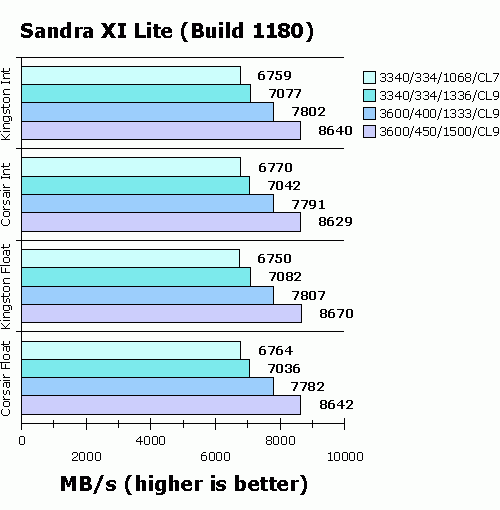
The Everest benchmarks shows similar results, the kits are on par.
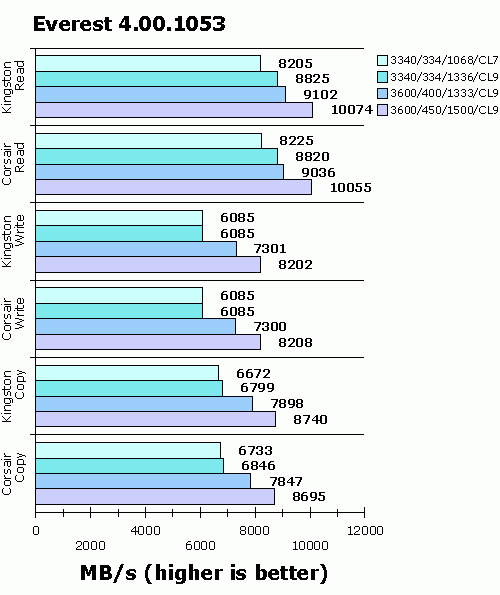
Everest does also benchmark the latency, higher clocks means more latency, but low frequency with low latency needs higher latency on the chipset, which increases access latency a lot:
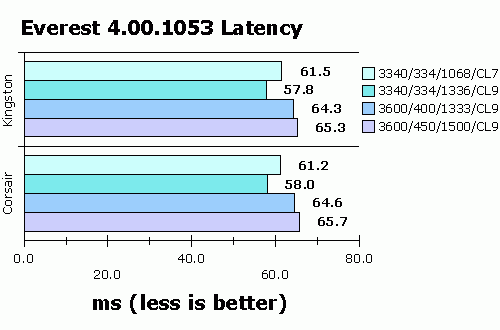
You can see for yourself how the results are effected when using an memory intensive program, such as Gordian Knot:
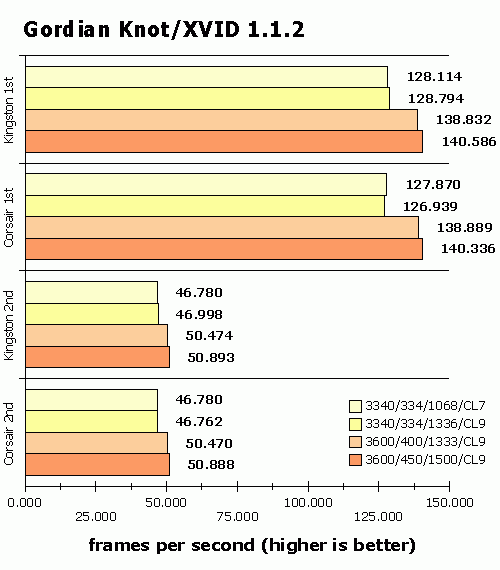
Conclusion:
We have learned that CL9 works fine, because we can run the chipset with low latencies. If we reverse the settings to CL7 and increase the chipset latencies, we got worse scores and the board gets unstable. The FSB is also important here. The Corsair kit even runs at 1600MHz with 400MHz FSB, but only yield bandwiths similar to 333FSB with only 1333MHz memory clock.
The results for such expensive memory kits are just poor. DDR3 PC3-1067 can give you a one per cent gain compared to DDR2 PC2-800. 1333MHz gives you another 1.2 per cent gain, with 1500MHz adding a further one percent. DDR3 1500MHz is roughly three per cent faster compared to DDR2 800MHz, but now you have to pay four to five times the price for DDR3 to get there. This gain will only show in memory intensive programs, such is the first pass of XviD encoding, as the second pass revealed that 0.8 per cent is the maximum gain.
DDR3 is far too expensive to justify the upgrade. When you are planning a new computer, DDR2 is just fine and you can save around $300-400. Use it to buy a faster CPU or a faster graphic card.
